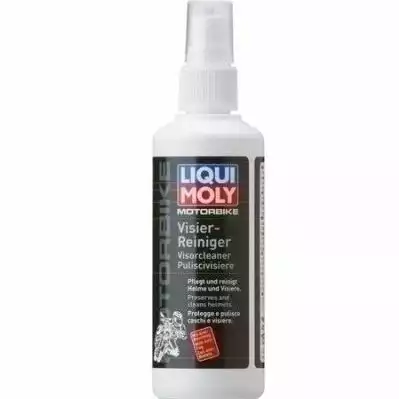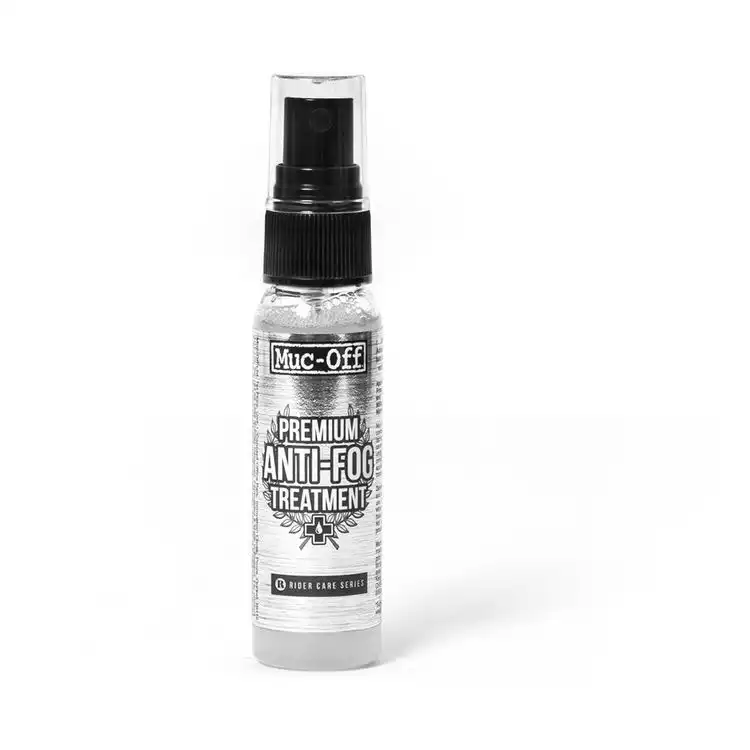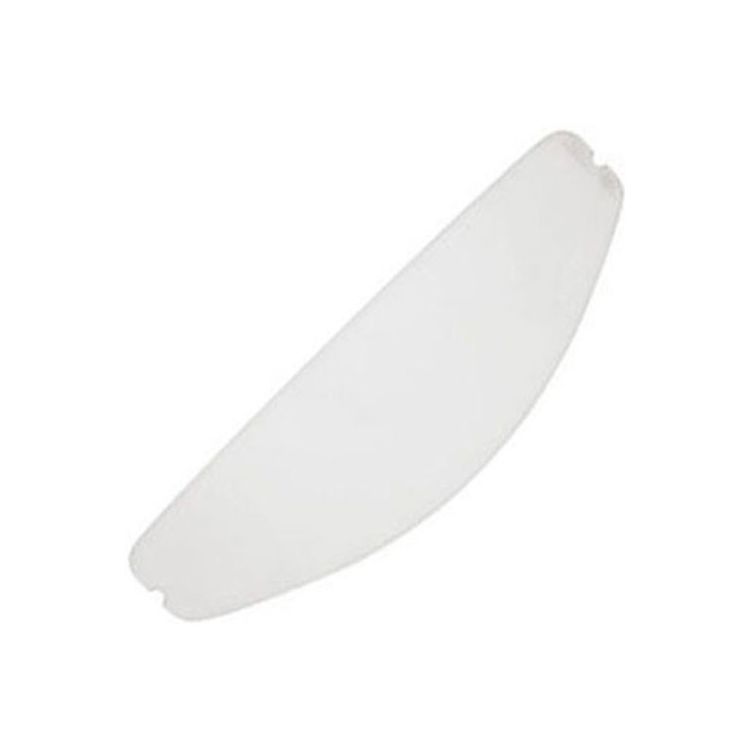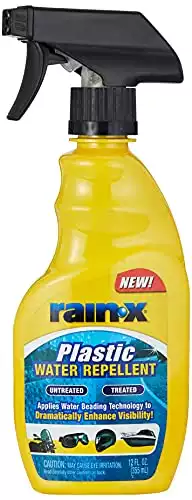Your motorcycle helmet visor is a vital piece of safety equipment you shouldn’t take for granted. Keeping it clean and scratch free is something you need to think about before every ride.
Cleaning your visor doesn’t need to take a long time or cost much, and in this article, we describe some basic things you can do.
Cleaning Your Motorcycle Helmet Visor
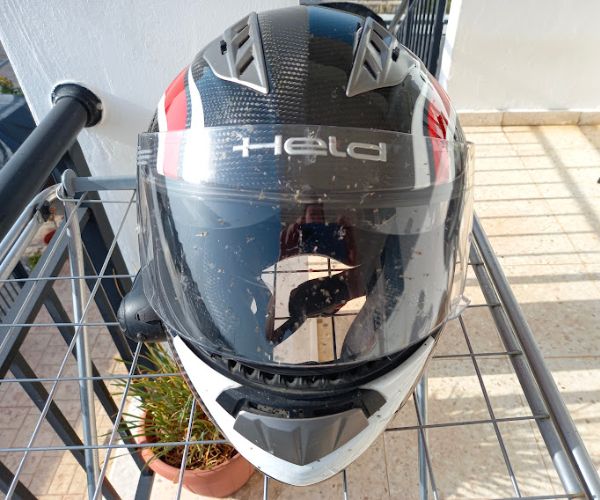
Removing the road grime and dead bugs from your visor is best achieved using a damp cloth. The type of cloth you use at this point is unimportant, but removing as much of the surface dirt as possible is essential.
If you simply try to polish the bugs and grime off, you will likely scratch the visor’s surface.
While this isn’t much of an issue during daytime riding, anyone that has ridden at night with a scratched visor will tell you that it’s not a pleasant experience! It’s similar to looking through a wet visor at night, except you can’t wipe off the scratches with your hand.
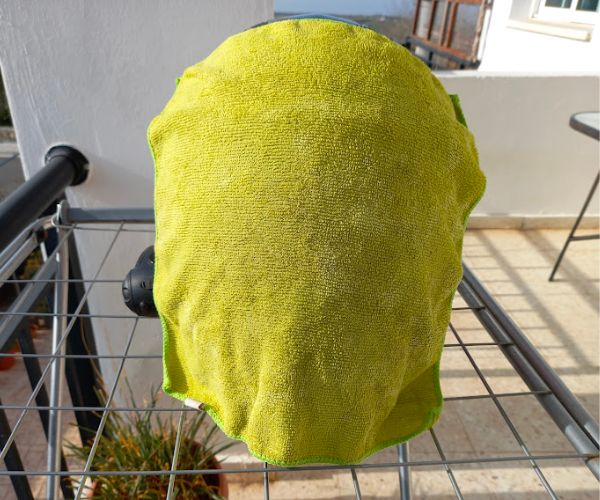
Rinse the visor under running water first to remove loose dirt and grime. Now soak a cloth or paper towel in water and lay them across the visor. Leave that for 10 minutes, but the longer, the better.
When you remove the cloth or towels, the grime and dead bugs will easily wipe away or rinse off under running water.
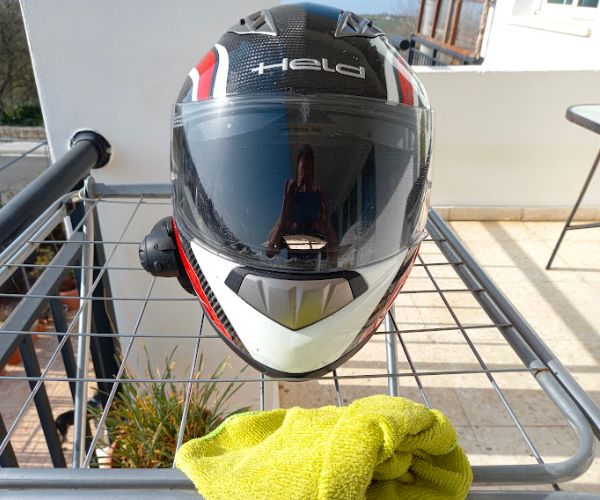
Once the visor is clean of bugs and dirt, you can use your preferred polish to remove any smears. I don’t need to apply special coatings to my visor, so plain furniture polish is good enough for me.
To recap, follow this procedure for cleaning your visor:
- If you need to clean the inside of the visor, remove it from the helmet.
- Rinse the visor under running water to remove dust and dirt.
- Soak the visor using a wet cloth or paper towel or in a bowl of warm soapy water if you removed it from the helmet.
- Leave the visor to soak for at least ten minutes, but longer if you can.
- After soaking, the bugs should easily wipe off the visor. If not, leave the visor to soak a little longer.
- Once cleaned of bugs, if you want to use anti-fog and water-repellent products, follow the manufacturer’s instructions.
- If you aren’t applying other products, you can polish the visor to remove any smears. I find non-wax furniture polish is just fine for this.
If you want to use one of the special coatings described below, you’ll need to follow the product manufacturers’ instructions. Polish may interfere with those products’ properties.
Plenty of specialized visor cleaning products are available, such as the Muc-Off Visor Cleaning Kit.
Should You Use Chemicals?
Generally, there isn’t any need to use chemicals to clean your visor, although plenty are available, such as the Liqui Moly Visor Cleaner.
The worst grime to remove from a motorcycle visor is the dead bugs you always get in summer. After a day of riding, your visor will be smothered in them. Using chemicals or a harsh cleaning cloth is tempting, but try to resist. This might damage your visor.
Can You Use Plastic Polish on Your Visor?
Yes, you can, but carefully! Plastic polish is abrasive, so it may distort the image you see through the visor.
If you have some annoying scratches on your visor, using plastic polish may extend the life of the visor. Just use it sparingly with a microfibre cloth.
After Cleaning Care
Once your visor is spotless again, there are several products that you can apply to keep the visor clear under various conditions.
Cyprus is a hot, sunny Mediterranean island, and having a clean visor is enough for me. But the following products could be lifesavers if you live in a cold or wet environment.
Anti-Fog Spray
It’s a challenge keeping the inside of your visor fog-free on a cold winter’s morning. I’ve seen many ideas on how to do it, such as cutting a potato in half and rubbing it over the visor. I tried this method, but it never seemed to work particularly well!
No need to involve root vegetables. Numerous anti-fog products are on the market now, each with varying results, including Muc-Off Anti-Fog Treatment spray.
It’s important to follow the manufacturer’s instructions when applying this product. Your visor must be spotlessly clean before you start.
Don’t use a microfiber cloth to apply the product, but plain soft tissues instead. Use plenty of the anti-fog solution and get the whole inside of the visor wet before wiping it with the tissues. Polish with the tissues.
Following the above method, you should get good results that will last for a few days, depending on how much you ride.
Pinlock
For a perfect permanent fog-free visor, I recommend the Pinlock system. The Pinlock system is straightforward and adds double glazing to your visor. Two small pins on either side of your visor are the mounting points for the thin plastic insert.
The insert forms a thin air layer between the visor and the Pinlock insert. This prevents condensation from forming on the inside of the visor, so you don’t get any fogging.
It’s an extremely simple and clever idea that works perfectly. The cost is higher than an anti-fog spray, but the benefits are far greater and last much longer.
Fitting a Pinlock insert is very easy. You bend the thin plastic layer, clipping the insert onto the small pegs fitted inside the visor. That’s it.
Fitting a Pinlock video
Your Pinlock insert will stay pretty clean, but once in a while, it’s worth removing it, washing it in warm soapy water, and polishing it with a microfiber cloth.
Water Repellent
A dirty visor holds water on its surface, reducing your vision. I’ve used products like Rain-X Water Repellent on my car windshield and my motorcycle visor, and I like how it clears water quickly.
The Rain-X formula makes the water form into beads that roll off the visor. It takes a little getting used to, but I prefer how clear it leaves the visor.
The only disadvantage is that you need airflow over the visor for it to work correctly. If you’re at a standstill, the beads don’t roll away, instead building up on the visor until you get moving again.

